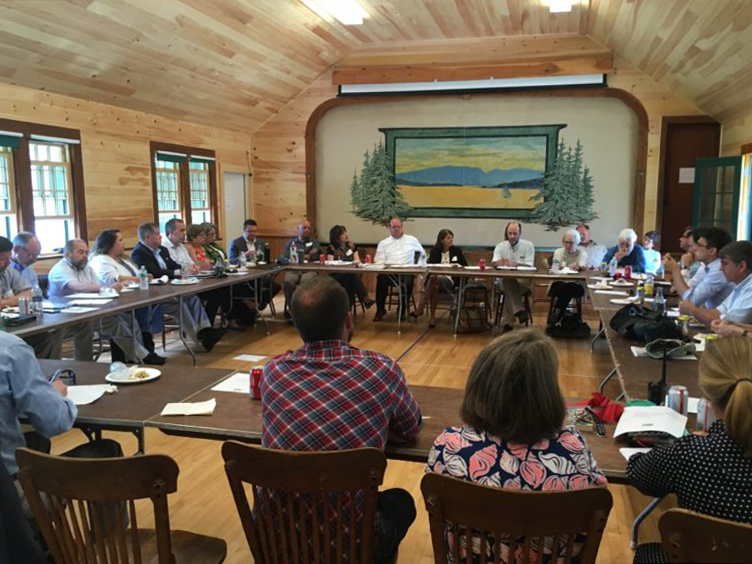With the upcoming election and impending change in the Governor’s office, it seemed like a good moment to reflect on the current state of one of the most important policy areas the Island Institute is working on— broadband.
Our broadband policy work starts with the idea that in order for coastal communities to be connected at speeds that are above the national average by 2025, we need at least three things from the policy realm. To get there, we need an effective statewide broadband authority, support for the community broadband process in the regulatory realm, and funding from beyond the community. With the implementation of policy changes made by the legislature a few years ago as well as an increase in attention being paid to community broadband projects, the overall policy landscape is moving a good direction.
This blog post from OTELCO, a publicly-traded telecommunications holding company located in Alabama, is based on a presentation given by Tracy Scheckel, OTELCO’s marketing manager, and Heather Johnson, director of the ConnectME Authority, and it provides a good summary of how recent policy changes are shaping up. As noted in the blog post, this year ConnectME has:
- Redefined their definition of “underserved subscribers” to anyone with internet below 25 Mbps/3 Mbps, essentially widening the amount of communities’ eligible for rural broadband funding.
- Set a statewide broadband target of 100 Mbps/10 Mbps
- Published, in partnership with the Maine Department of Economic Community Development, a “State of Maine Broadband Action Plan”
- Announced their intent, with the Maine Department of Economic and Community Development (DECD), to go after a share of the $600 million in federal funding available for rural broadband
- Toured the state hosting discussions on broadband expansion funding
We are looking forward to continued work with ConnectME to make sure communities have access to the information and resources they need to make informed decisions about broadband. As part of our work to develop and share community solutions, we helped host a statewide broadband conference at the end of May. This conference brought together communities and national experts to share lessons learned to date, discuss new ways for solving challenges, and identify future policy needs to help ensure that all Mainers are connected through high-speed, reliable internet. More information on the conference, including U.S. Senator Angus King’s keynote speech and audio from the various panels, can be found here.
In terms of funding from beyond the community, it is tough to have a better story than the Cranberry Islands. In July, the head of the USDA’s Rural Development agency took time out of her busy schedule to help the Cranberry Islands celebrate their fiber-to-the-home broadband network, for which the USDA provided a significant source of funding. After the ribbon cutting, there was a roundtable discussion about broadband in Maine with key leaders from across the state. This blog post from GrowSmart Maine has more information on both the ribbon cutting and the roundtable.
At the Island Institute, we also appreciate the opportunity to share a slice of island life with partners in Maine as well as those who can help allocate resources at the highest levels of federal government. We were very excited that during their time in Maine the USDA contingent was able to support the local artist economy and get out on the water to fish with a lobsterman from the Cranberry Isles Fishermen’s Co-op!
We are hopeful that continued work by our delegation, ConnectME, and various partners will make Maine competitive for a slice of the $600 million appropriation to the USDA to support rural broadband, which Senators Susan Collins and Angus King helped secure in the FY18 appropriations omnibus. The rules for these funds have yet to be finalized, but given the activity and interest in bringing broadband to rural Maine, we hope that, as a state, we are competitive.
In the report “Making Maine Work”, the Maine State Chamber of Commerce, the Maine Development Foundation, and Educate Maine call for making Maine a leader in high-speed broadband. To do this, they suggest committing $100 million annually for the next five years to expand broadband, structure state investment to maximize private and other sources of public investment, and increase digital literacy and equity at the household level.
All of these pieces are needed and feed into the broader idea that statewide leadership on broadband remains critical. I was very pleased to work with Larry Sterrs from the Unity Foundation and Susan Corbett from Axiom Technologies and the National Digital Equity Center on this op-ed that helps identify the kinds of leadership that Maine’s next administration needs to provide in order to solve our broadband challenges.
Funding public-private partnerships, effectively leveraging funding, and making sure that people can use the infrastructure are common themes between the op-ed and the ideas contained in Making Maine Work. As noted in the op-ed: “High-speed, reliable internet is no longer optional. Our three organizations are committed to a positive, aspirational vision for the state based on all Mainers having the access and ability to use broadband.”


